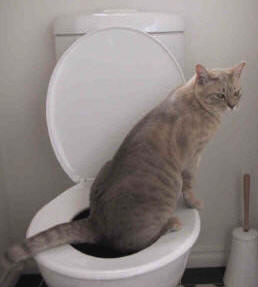The Risks of Disposing Cat Poop in Your Toilet - Precautionary Measures
The Risks of Disposing Cat Poop in Your Toilet - Precautionary Measures
Blog Article
Right here down the page you can discover additional good quality content when it comes to How to Dispose of Cat Poop and Litter Without Plastic Bags.

Introduction
As pet cat proprietors, it's vital to bear in mind just how we dispose of our feline friends' waste. While it might appear hassle-free to flush pet cat poop down the toilet, this method can have detrimental repercussions for both the setting and human health.
Environmental Impact
Purging pet cat poop presents hazardous microorganisms and bloodsuckers right into the water, posing a significant risk to water environments. These impurities can adversely influence marine life and compromise water quality.
Health Risks
Along with ecological worries, flushing cat waste can also position health threats to people. Cat feces may have Toxoplasma gondii, a bloodsucker that can cause toxoplasmosis-- a possibly extreme health problem, particularly for expectant ladies and people with weakened immune systems.
Alternatives to Flushing
Luckily, there are more secure and more responsible methods to deal with feline poop. Consider the following choices:
1. Scoop and Dispose in Trash
One of the most typical technique of disposing of pet cat poop is to scoop it right into a biodegradable bag and toss it in the garbage. Make sure to make use of a specialized clutter inside story and deal with the waste immediately.
2. Usage Biodegradable Litter
Go with eco-friendly pet cat clutter made from products such as corn or wheat. These clutters are eco-friendly and can be securely gotten rid of in the trash.
3. Bury in the Yard
If you have a backyard, take into consideration hiding feline waste in a designated location far from vegetable yards and water sources. Be sure to dig deep adequate to avoid contamination of groundwater.
4. Install a Pet Waste Disposal System
Purchase an animal garbage disposal system particularly made for feline waste. These systems make use of enzymes to break down the waste, minimizing smell and environmental effect.
Conclusion
Accountable pet dog ownership prolongs past providing food and shelter-- it additionally entails proper waste administration. By avoiding purging pet cat poop down the toilet and choosing alternate disposal techniques, we can lessen our ecological impact and shield human wellness.
Why You Should NEVER Flush Cat Poop (and/or Litter) Down Your Toilet
The Problem with Litter
The main function of litter is to solidify and adhere to your cat’s waste. While this makes litter excellent for collecting cat poop and urine, it’s also the exact property that makes it a nightmare when flushed down the toilet.
Cat litter can and will clog pipes. There is non-clumping litter, but it’s still quite heavy and can build up in pipes. This is true even of supposed “flushable litter.”
The problems only compound when the litter is already clumped into cat waste. Toilet paper is among the more flushable things, and even too much of that will clog a toilet.
The Problem with Cat Poop
Sewers and septic systems are designed with human waste in mind. The microbes that help break down human waste don’t work on cat waste. Additionally, cat poop plays host to the parasite Toxoplasma gondii.
When flushed, this parasite can enter the environment in places it was never meant to, posing a risk to pregnant women, their unborn children, and other people with compromised immune systems. While it might not seem possible, flushing cat poop can indeed introduce this parasite to the public water supply.
These reasons are why, even if you’ve trained your cat to go on the toilet and flush, which is possible, it’s still not a good idea. Also, pregnant women and the immunocompromised shouldn’t change litter, either.
How to Handle Litter
The best way to handle litter is to simply put it in a plastic bag and place it in the trash. Avoiding environmental risks and possible plumbing damage is worth the extra effort.
You can also invest in devices that seal away your cat’s waste in a separate compartment, so you don’t have to change the litter nearly as often. They’re also safer for pet owners because they limit the possibility of Toxoplasma gondii exposure.
Disposing of litter the old-fashioned way will ensure you won’t have to worry about any issues that flushing the waste can potentially cause.
Take Care of Clogged Pipes with Stephens Plumbing, Heating & Air Conditioning
The reasons you should never flush cat poop down your toilet are numerous, but sometimes the inevitable happens despite your best efforts.
Stephens Plumbing, Heating & Air Conditioning is ready to help if you’re experiencing litter-blocked plumbing. Whether you need us in an emergency or want to schedule regular maintenance, we’re here for you.
https://www.stephensplumbing.net/bathroom-plumbing/never-flush-cat-poop-down-your-toilet/

We were made aware of that editorial about Don’t flush cat feces down the toilet through a friend on our other web property. Sharing is caring. Helping people is fun. I recognize the value of reading our article about How to Dispose of Cat Poop and Litter Without Plastic Bags.
Click Here Report this page